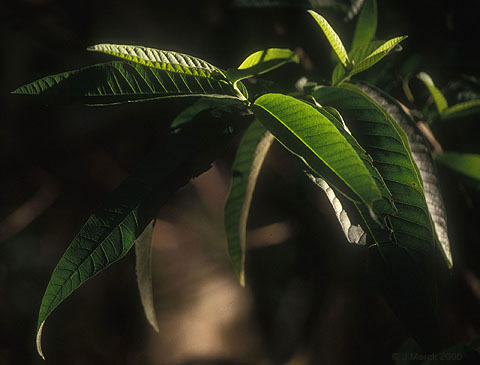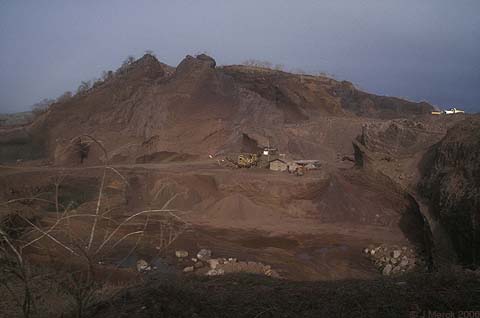Post WWII: Internationalism and Ecology
- Ecology as a scientific discipline
- The translation of internationalist humanistic ethics into powerful institutions such as the UN and UNESCO (The United Nations Educational, Scientific, and Cultural Organization), the World Wildlife Fund. - A movement broadly analogous to the utopianism that followed WWI.

It has three major goals:
- Restoration and preservation of the native environment: The opening of the park (centennial or the publication of the Origin) placed non-colonized areas of the islands under protection.
- Scientific research and captive breeding of endangered animals: 1964: Darwin Research Station opens.
- Ecotourism: The first organized tour group arrived in 1969 aboard the Lina-A, operated by Metropolitan Touring. That's five years after the formal creation of the park. Tourism has grown in steps:
- 1986: Puerto Baqueirizo Moreno: First airport opens.
- 1993: Telephone Connection to Mainland Telephone service is made available to the mainland and all over the world. The Galápagos Islands are now linked to the outside world; internet cafés are even available in the towns.
 Artisanal local fishermen are allowed to fish in these waters, under certain restrictions
of takes and seasons. Unfortunately, local fishermen have greatly expanded their take of
pepiños (local name for sea cucumber species Stichopus fuscus). Because of high
prices offered in East Asia, these have become very marketable. Clashes between fishermen
and the Park Service and scientists with the CDRS have occurred, because of the illegal practices
related to the harvesting. This has lead to occupation of CDRS by fishermen, and
non-violent protests by public in response. Indeed, resolution of the inherent conflicts between conservation organizations, ecotourism, and local artisanal fisheries is a major and ongoing political priority.
Artisanal local fishermen are allowed to fish in these waters, under certain restrictions
of takes and seasons. Unfortunately, local fishermen have greatly expanded their take of
pepiños (local name for sea cucumber species Stichopus fuscus). Because of high
prices offered in East Asia, these have become very marketable. Clashes between fishermen
and the Park Service and scientists with the CDRS have occurred, because of the illegal practices
related to the harvesting. This has lead to occupation of CDRS by fishermen, and
non-violent protests by public in response. Indeed, resolution of the inherent conflicts between conservation organizations, ecotourism, and local artisanal fisheries is a major and ongoing political priority.

The Result
- The Galápagos have a presence in the popular imagination far exceeding anything previously.
- Many people, including journalists, camera-crews, and authors, have visited and popularized them.
- They now commonly appear on lists of "must-do" lifetime destinations.
- The threats associated with their popularity engenders a host of challenges of the National Park.
Biodiversity Issues:
Island communities are particularly vulnerable to environmental threats:
- Small area means few refuges in times of crisis
- Small area means small population sizes, which means lower genetic diversity compared to large populations
- Many island organisms (with relatively simple naive ecosystems) are not adapted to complex threats posed by continental organisms (i.e., predators)
So danger of extermination by habitat loss, by predation, by ecological replacement, by disease, and more.
 Specifics examples:
Specifics examples:
- Intentionally introduced species of farm animals, especially goats (primary threat), pigs, and donkeys.
- Intentionally introduced pet species, especially dogs and cats.
- Unintentionally introduced species of animals, including rats, mice, fire ants, and
wasps.

- Plants: 475 introduced species in 1999 (compared to 560 native!). Some were brought
intentionally (primarily for farming: quinine, blackberry, etc.), others unintentionally
introduced plant species: seeds carried on shoes, in packages, etc.
- Main plant pests on Santa Cruz are guava (Psidium guayaba), the curse of India (Lantana camara), blackberry (Rubus niveus), and quinine (Cinchona pubesceris).
 Limited Natural Resources: Wood, mined rock and gravel, and arable land are
all relatively rare, and fresh water more so.
Limited Natural Resources: Wood, mined rock and gravel, and arable land are
all relatively rare, and fresh water more so.
Management of Human Population:
- Tourism: presence of people could potential disturb much of the environment. Hence, rules limiting tourism to certain spots of islands, must be accompanied by guide, etc. (see below)
- Local population: while smaller total number than annual visitors to the island, have great impact because they are there full time. Strict rules limit immigration to islands.
Current Efforts and Crises:
Reestablishing wild populations (esp. of land iguanas and tortoises: terrestrial animals which are very vulnerable to predation as young): a major activity of the CDRS. Conolophus was reintroduced to Baltra in 2004
Controlling Introduced Species:
- CDRS is in charge of basic and applied research; Galápagos National Park Service in charge of monitoring and protecting habitats; Charles Darwin Foundation, Galápagos Conservation Trust, and others in charge of finding resources to implement controls and education.
- Have been many successes in eliminating some introduced species on some islands.
- Other efforts are ongoing, like Project Isabela, new campaign to eliminate introduced ungulates on Isabela (and other islands) via helicopter-based hunting.
- However, there are sometimes high costs of doing business: estimation is that to eliminate quinine in the islands would need 15 people, working for 15-20 years, at about $2M.
Control and Regulation of the land use
Zone laws for the park:
different levels for zone for different sections, each with their own limitations on use.
The following zones have been established:
- High Protection Zones (near pristine part of the Park, kept under very tight restrictions)
- Primitive Zones (kept free from all but investigators and Park staff, allowing for recovery of native wildlife). Majority of area of the Park is Primitive Zone
- Special Use Zone (places where park has been modified for human infrastructure or natural resource use)
- Visitors Zones (the places people can visit)
- External Zones (places of human habitation)
Series of rules governing what can be brought into the Park: Sistema de Inspeccion y Cuarentena para las Islas Galápagos (SICGAL)

